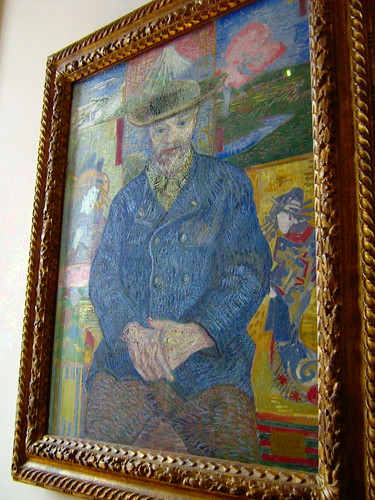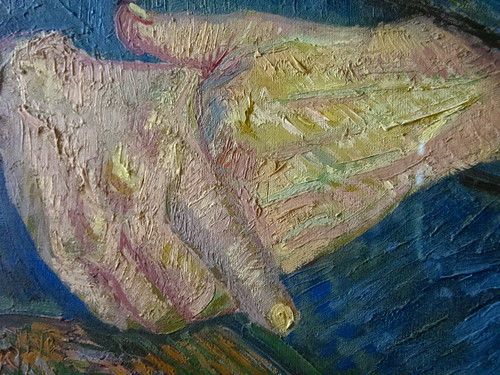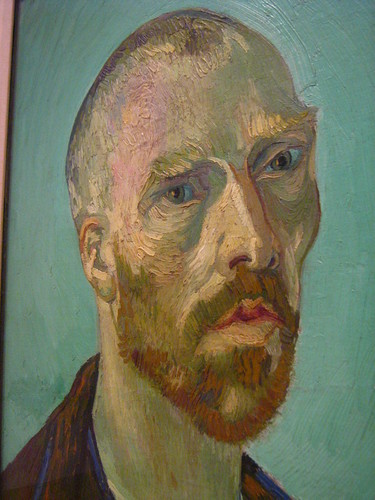Paris
If Amsterdam was a wide embrace, if the Kröller-Müller was a sweet smile, if Nuenen was chill breath, and Auvers, hot tears… Paris was a wary look. From the moment I set foot on the Rue de Dunkerque, I felt that Paris would endure my visit, but it did not necessarily wish me well.
There were beautiful moments of course, but the most important part of my visit – Vincent’s acute and undeniable presence – well, Reader, I’m afraid I must keep a few things closer to my heart, at least for now. However, there are a few odds and ends from Paris I’d love to share with all of you today…
Namely two works of art that I find of incredible importance, both in the Musée Rodin. One is Vincent’s portrait of Père Tanguy (pronounced tahn-gee), his paint dealer.
Le Père Tanguy, 1887-1888.
Tanguy was one of Vincent’s closest friends, and one of the few who loved his work from the beginning. In general, Tanguy dealt with the post-impressionists before most other dealers, and with Vincent he traded paint for paintings. It worked out nicely for both of them.
Tanguy was just as interested in Japonisme (Japanese art pieces) as Vincent, and so they cover the background of this portrait. The soft smile on Tanguy’s lips is one you can really only behold in person, but I tried my best to capture it here.
I find the colors here simply extraordinary. That yellow fingernail kills me… This is particularly advanced (in my opinion) given that Vincent painted this while still in Paris, before he headed South and fully embraced his own style. As the story goes, Tanguy was so happy with this memorial, he put the price at 5,000 francs — far too high for anyone to ever purchase it from him. No one ever did in his lifetime, but the painting eventually became Rodin’s, and it now sits happily in the beautiful Rodin Museum in Paris.
Head of St. John the Baptist on a platter, 1887, by Auguste Rodin.
This sculpture also has an interesting link to Vincent that thankfully I had read about before I visited the museum. Apparently, when Theo (Vincent’s brother) first saw this bust, he said it looked exactly like Vincent.
Fascinatingly, after both Vincent and Theo’s death, Theo’s wife Jo saw the piece. She swore it must have been modeled after Theo. Not only does this attest to the brothers looking alike, but I believe it must say something about the expression, and about love. I imagine that Theo and Jo saw Vincent and Theo (respectively) as men of suffering…
Perhaps most chilling to me was that I recognized you, Vincent. After seeing so much of your work – and particularly after seeing the actual places and things you painted – I had begun to understand your vision. I could, in a way, see through your eyes; I could look at your paintings and begin to imagine the reality you were capturing. This also permitted me to truly see you, through you.
The curve of the nose right at the horizon of your eyes, the high cheekbones especially accentuated in your years of hunger… I did not need to look at a label to find you in that room.
Self-Portrait, 1887.
Self-Portrait, 1887.
Self-Portrait dedicated to Paul Gauguin, 1888.
Self-Portrait, 1889.
As I wrote in my journal the following day, it is interesting that only now – this week, even – that I know your face.









YES! Great piece, keep up the terrific work. It is a sort of information which will gain recognition for itпїЅпїЅs craft.